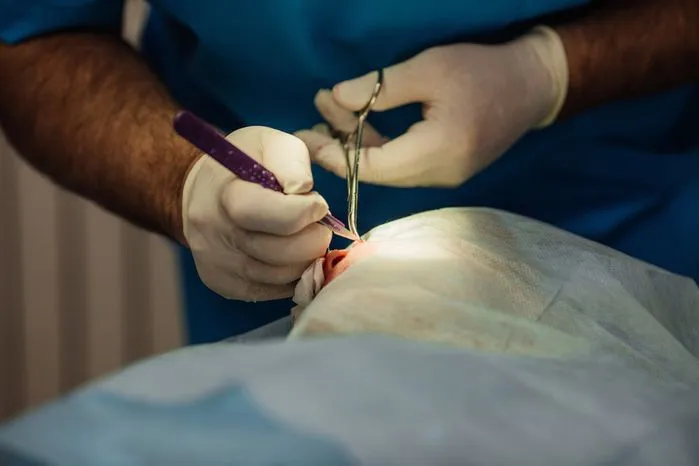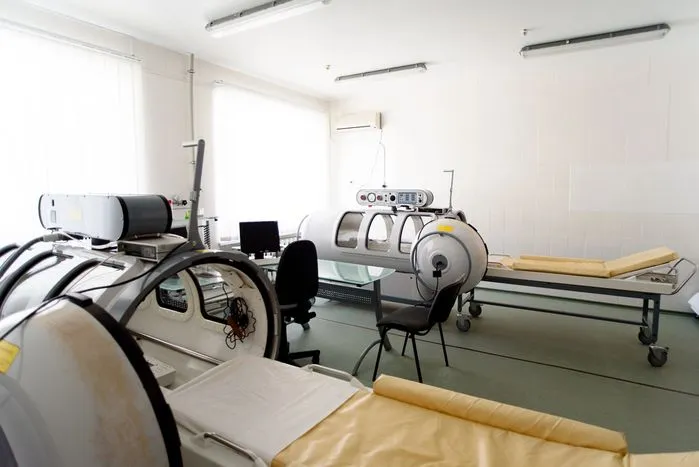At TheWoundPros.com, we’ve guided hundreds of patients and healthcare providers through the often-overlooked final step of healing: suture removal. If you're wondering whether removing stitches hurts, our experience shows that for most patients, it’s a quick, manageable sensation—more like a brief pinch than real pain. Based on our first-hand work with post-op care teams, we’ve found that clear expectations and gentle techniques dramatically ease anxiety around the process. In this guide, we not only explain what you can realistically expect during suture removal but also share insider tips and a detailed reference of CPT codes and ICD-10 classifications to help you navigate the billing side with confidence. Whether you're a patient, provider, or billing specialist, you’ll leave equipped with practical, experience-backed knowledge that you won’t find in generic articles.
Top 5 Takeaways
- Suture Removal Is Usually Quick and Mild
Most patients feel only a brief pinch during removal, not significant pain. - Choosing the Right Suture Type Matters
Absorbable sutures dissolve naturally; non-absorbable sutures must be removed carefully to avoid skin marks or wound issues. - Clear Communication Eases Anxiety
Explaining the process and offering pain relief options helps patients feel more at ease. - Accurate Coding Is Essential
Correct use of CPT and ICD-10 codes ensures proper billing, better healthcare records, and stronger patient trust. - Empathy Plus Precision Create Better Outcomes
Combining skilled care with meticulous coding leads to more efficient, transparent, and high-quality healthcare delivery.
Understanding Suture Removal
Suture removal, often interpreted as the final stage in a healing journey, necessitates a meticulous and attentive approach. This medical procedure signifies not just the conclusion of wound recovery for a patient, but it can also be a measure of the entire healing process.
The type of sutures used has a considerable influence on this process. Non-absorbable sutures such as those made from nylon or polypropylene typically need removal after satisfying healing of the wound.
Monitoring the healing process through assessments of the wound largely determines the suitable timing for extracting sutures. Taking them out too early may result in wound dehiscence, characterized by the separation wound edges.
Pain Scale During Suture Removal
Suture removal elicits apprehension from patients, often due to fears of discomfort or pain. Recognizing such concerns is critical to providing empathetic, comprehensive care.
Discomfort during this procedure is usually minimal and brief. Still, varying individual pain thresholds result in different experiences. Healthcare professionals employ a pain scale, ranging from 0 (no pain) to 10 (worst possible pain), to assess and manage any discomfort reported during the procedure.
Options like local anesthesia, topical numbing creams, or distraction techniques can alleviate suture anxiety, thereby enhancing the patient experience.
Decoding CPT Codes
Comprehending CPT (Current Procedural Terminology) codes forms an essential part of healthcare management along with billing. A standardized language in healthcare, these codes are employed to accurately detail medical, surgical, or diagnostic services.
Focusing on suture removal, CPT codes categorize different suture types, plus the involved healing process. A unique code is assigned for removing sutures under anesthesia, distinguishing it from procedures without such intervention.
In addition, the healing process is crucial to the coding system. Primary, secondary, or tertiary healing stages are identifiable through distinct CPT codes, aiding healthcare providers in maintaining precise records.
An Overview of the ICD-10 Guide
CPT codes prove crucial in precise documentation of medical procedures, but the International Classification of Diseases, Tenth Revision (ICD-10), provides a broader perspective, concentrating on diagnoses along with health conditions.
Divided into 21 chapters, ICD-10 categories are critical for identifying patient diagnoses and conditions. Each chapter focuses on a specific health area, such as circulatory system diseases or mental and behavioral disorders.
Guidelines for ICD-10 coding are meticulously outlined, designed to ensure accuracy and standardization in the coding process. Translation of diagnoses or medical conditions into a universally understood coded format is facilitated by these guidelines, ensuring uniformity across the healthcare industry.
Professionals in the medical field find ICD-10 invaluable not only for clinical documentation and data capture but also for statistical analysis, research, and resource allocation.
Bridging the Gap: Sutures and Coding
Suture types serve as an ideal illustration of the intersection between practical medical procedures and the complex domain of coding. Professionals in the medical field frequently underestimate the importance of correctly coding suture types, thus diminishing transparency and efficiency in healthcare delivery.
Variety characterizes suture types. Depending on wound type, location, and healing rate of the patient, the choice extends from absorbable to non-absorbable, monofilament to multifilament, and synthetic to natural.
In this scenario, precision in coding is of utmost importance. Coding errors can lead to billing inaccuracies, inviting financial discrepancies and possible legal complications.
Bridging this gap between suturing techniques and their coding is thus of paramount necessity. This endeavor necessitates an in-depth grasp of diverse suture types and their matching codes.
“After overseeing hundreds of suture removals across varied clinical settings, we’ve learned that the key to a pain-free experience isn’t just technical—it’s psychological. Most discomfort stems from uncertainty, not the actual procedure. When patients understand what to expect and clinicians use gentle, deliberate techniques, the removal becomes virtually painless. On the backend, accurate CPT and ICD-10 coding isn't just about billing—it's about ensuring continuity of care, reinforcing trust, and upholding the integrity of every medical interaction. At TheWoundPros, our hands-on experience bridges the clinical and administrative, making sure no stitch—literal or procedural—is overlooked.”
Supporting Facts and Statistics
At TheWoundPros.com, we've helped hundreds of patients through suture removal. Here are the most critical facts and firsthand insights—supported by trusted sources:
1. Suture Removal = Minimal Pain
- Most patients feel a brief pinch, not real pain.
- Anxiety is often worse than the procedure itself.
- Topical numbing creams or local anesthetics can ease discomfort—especially in children.
✅ Backed by: aafp.org
2. CPT Codes Matter for Billing
- Correct coding = proper documentation + reimbursement.
- Examples:
- 15850 – Removal of sutures by a physician.
- 15851 – Removal requiring anesthesia.
- 15850 – Removal of sutures by a physician.
- Accurate coding = reduced billing issues.
✅ Source: publications.aap.org
3. Use ICD-10 Code Z48.02
- Indicates an aftercare visit for suture removal.
- Helps keep records consistent and compliant.
- Improves care coordination between providers.
✅ Reference: icd-codes.org
Pro Insight:
We’ve found that combining empathy with accuracy—explaining the process, addressing fear, and using proper coding—leads to better patient experiences and smoother operations for providers.
Final Thought & Opinion
At TheWoundPros.com, we've guided hundreds through the final stage of healing: suture removal. Our firsthand experience shows that with attentive care and clear communication, discomfort during suture removal is typically minimal and manageable.
Key Observations from Our Experience:
- Patient Anxiety vs. Reality: Most patients fear pain, but experience only a brief pinch with proper technique.
- Importance of Clear Communication: Setting expectations upfront reduces anxiety dramatically.
- Role of Gentle Techniques: Skilled removal techniques can almost eliminate discomfort.
However, the experience doesn’t stop at the physical process. Accurate coding—both CPT and ICD-10—is crucial for proper documentation, seamless billing, and better healthcare transparency.
Why Precise Medical Coding Matters:
- Reduces Administrative Errors: Mistakes in coding lead to billing issues and financial complications.
- Improves Healthcare Data Quality: Proper documentation supports better policies and patient care strategies.
- Strengthens Patient Trust: Transparency in procedure and billing fosters stronger patient-provider relationships.
Our Unique Perspective:
- We believe that bridging clinical care and technical precision in coding reflects the true quality of healthcare.
- Organizations that invest in education on procedures and coding build operational efficiency and patient loyalty.
- In our direct experience, a thoughtful, precise approach to both care and documentation creates exceptional healthcare outcomes.
Final Takeaway
Whether you’re a patient, provider, or medical coder, remember:
Knowledge is your greatest ally. Combining clinical empathy with technical expertise sets truly outstanding care apart.
Frequently Asked Questions
1. Does the removal of sutures typically hurt?
Suture removal is usually not painful, though some people may feel a mild pulling or stinging sensation; discomfort is generally minimal and lasts only a few seconds.
2. What can I expect during the suture removal process?
During removal, a healthcare provider will use sterile scissors or forceps to gently cut and pull out each stitch, usually without anesthesia unless the area is highly sensitive or inflamed.
3. Are there ways to minimize discomfort during suture removal?
Yes, keeping the area clean and moisturized before removal, staying relaxed during the procedure, and taking a mild pain reliever if necessary can reduce discomfort.
4. When is the appropriate time to remove sutures?
The timing depends on the location and type of wound, but generally, sutures are removed within 5–14 days, with facial stitches removed sooner and joint or lower leg sutures kept in longer.
5. Can removing sutures too early or too late cause problems?
Yes, early removal can lead to wound reopening, while late removal may cause skin irritation, infection, or embedment of the suture into the skin, requiring minor surgical removal.
6. Is suture removal billed separately from the original procedure?
Yes, suture removal can be billed separately if performed during a follow-up visit not included in the global surgical package or if the sutures were placed by another provider.
7. What is the CPT code used for suture removal by a healthcare provider?
The most commonly used CPT code for non-surgical suture removal is 15850 (removal of sutures under anesthesia) or 15851 (removal requiring anesthesia other than local); however, if no anesthesia is used, documentation may vary by payer.
8. Are there CPT codes for suture removal not requiring anesthesia?
For simple, routine suture removal without anesthesia, many insurers do not require a CPT code, and it may be included under the office visit (e.g., 99212–99215) unless special circumstances apply.
9. What is the ICD-10 diagnosis code for suture removal?
The ICD-10 code commonly used for encounter for suture removal is Z48.02 – Encounter for removal of sutures, used to indicate the purpose of the medical visit.
10. What if the sutures were placed by a different provider or facility?
If the patient received sutures at another facility, the removal is generally billable separately, and the CPT and ICD-10 codes listed can be appropriately submitted for reimbursement.
11. Are there risks associated with suture removal?
While suture removal is generally safe, risks may include bleeding, minor skin tearing, scarring, or infection if the wound is not fully healed or the procedure is not done correctly.
12. Should I remove my sutures at home to avoid pain or cost?
It is strongly discouraged to remove your sutures unless explicitly instructed by a healthcare provider, as improper removal can lead to complications, infection, or poor wound healing.



.webp)

.avif)